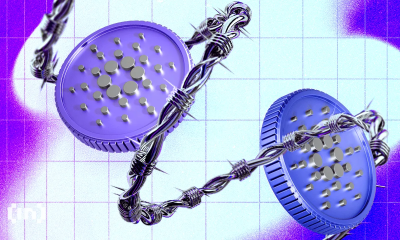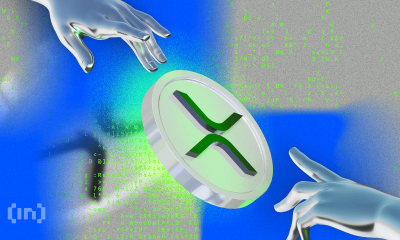Market
Key Support and Resistance Levels to Watch
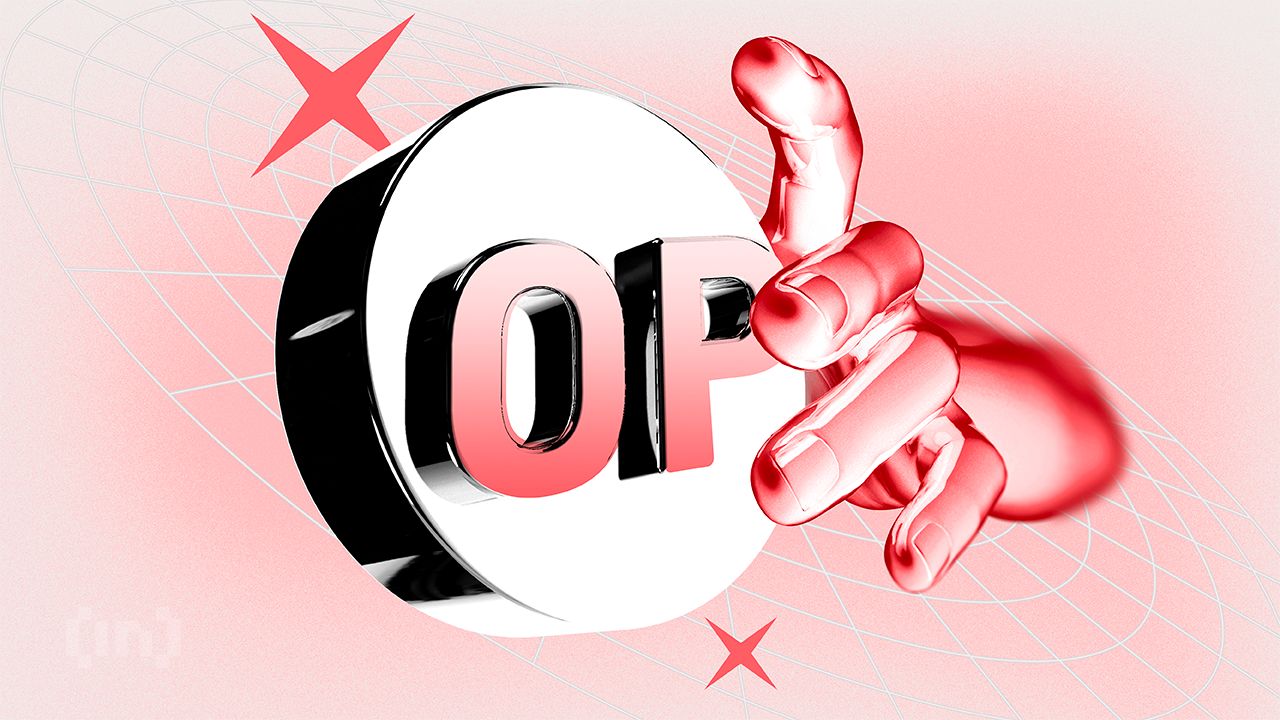
In this analysis, you will delve into the recent price drop of the Optimism token, focusing on the 4-hour chart.
Additionally, you will explore the trends in daily unique addresses and transaction volumes to assess the network’s health and potential impact on the token’s value.
Optimism: A Technical Overview
Examining the 4-hour chart of the Optimism token, we see that on June 7, the price broke below the Ichimoku Cloud, resulting in an 18% drop in that breakout candle.
This significant movement underscores the importance of monitoring technical indicators for effective risk management, such as setting stop losses. Following this sharp decline, the price stabilized within the range of $2.140 to $2.240.
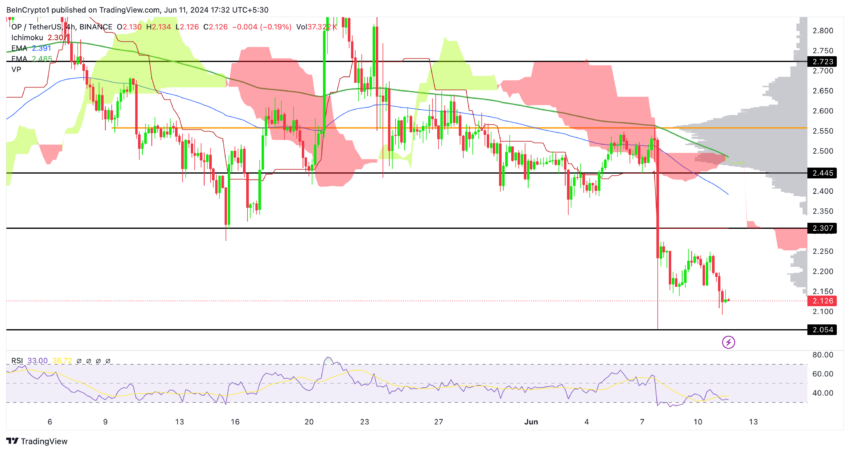
After the drop, the price stabilized within the $2.140 to $2.240 range. Additionally, the volume profile indicates a low-volume price range within this consolidation period, suggesting limited trading activity and potential for future volatility.
Read More: Optimism vs. Arbitrum: Ethereum Layer-2 Rollups Compared
The black lines marking resistance and support levels are crucial Ichimoku baseline plateaus that traders should closely monitor. These levels can provide insight into potential price action and areas where the price might encounter significant support or resistance.
Resistance Levels ($2.723, $2.445): These price levels are where the price has previously faced selling pressure, making them critical to monitor for potential reversals or breakouts.
Support Level ($$2.054): This price levels highlight areas where buying interest has historically emerged, potentially acting as a price floor.
Daily Addresses
From May 1, 2024, to June 10, 2024, the number of unique addresses on the OP Mainnet increased from 138,107,252 to 145,937,135, a total increase of 7,829,883 addresses.
The largest single-day increase was on May 18, 2024, with an addition of 642,066 unique addresses.
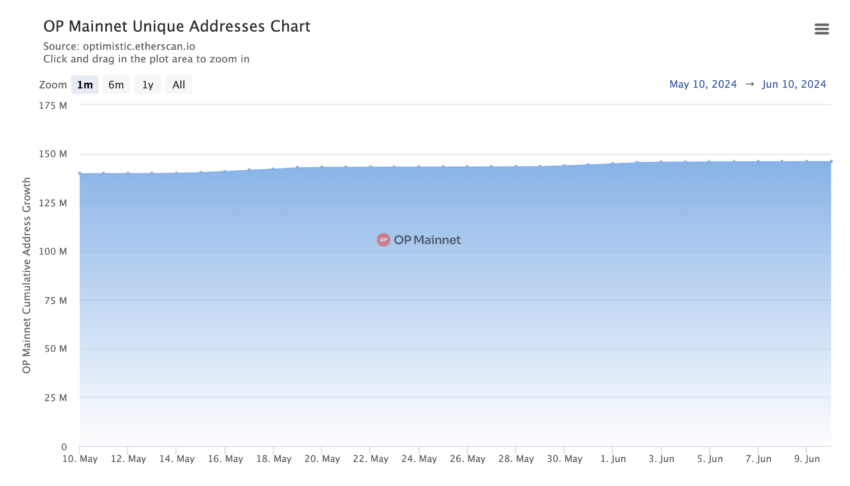
There is a consistent daily increase in unique addresses, indicating sustained user interest and adoption of the OP Mainnet.
The steady rise in daily unique active addresses is a strong network health indicator.
More unique addresses interact with the OP Mainnet, suggesting a growing user base and increased network activity. This growth can lead to higher network value, as user adoption is a critical factor in a token’s success and value.
Daily Transactions
The analysis of daily transactions is crucial for understanding the network’s activity levels. High transaction volumes indicate robust network usage and engagement, which are positive signs of network vitality.
Daily transactions exhibit significant volatility, with substantial changes in the number of transactions from one day to the next.
Read More: What Is Optimism?
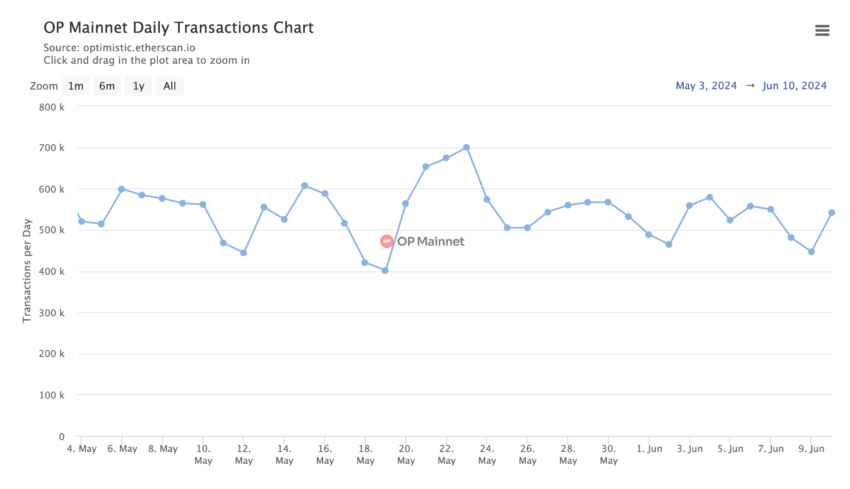
Between June 1 and June 10, OP Mainnet saw an increase of 53,778 transactions (from 487,984 to 541,762). This represents a marked improvement in daily activity, reflecting increased user engagement or significant network events driving higher transaction volumes.
The fundamental outlook for Optimism remains bullish. Despite Bitcoin’s price drop to $67,000, the Optimism token has not experienced another sharp decline today and has maintained its range.
A breakout below the $2.05 level could signal a significant continued decline. Well, if the price holds above this level and Bitcoin recovers to $70,000, Optimism could trade back at $2.30 to $2.40 in the mid-term.
Disclaimer
In line with the Trust Project guidelines, this price analysis article is for informational purposes only and should not be considered financial or investment advice. BeInCrypto is committed to accurate, unbiased reporting, but market conditions are subject to change without notice. Always conduct your own research and consult with a professional before making any financial decisions. Please note that our Terms and Conditions, Privacy Policy, and Disclaimers have been updated.
Market
Top 3 Made in USA Coins to Watch In April

Made in USA coins continue to try a rebound, with Solana (SOL), RENDER, and Jupiter (JUP) standing out as key names to watch in April. Despite recent price corrections, each of these tokens plays a major role in high-growth areas like DeFi, AI, and blockchain infrastructure.
Solana has seen its price dip, but ecosystem activity remains strong; RENDER is riding the wave of AI demand despite market turbulence; and Jupiter is showing solid usage metrics even as its token struggles. Here’s a closer look at the technical and fundamental setups for each of these standout U.S.-based projects.
Solana (SOL)
Solana has faced a notable price correction over the past week, with its value dropping nearly 13%. If this bearish momentum continues, the token could be on track to retest the critical support level at $120.
A breakdown below that could see SOL sliding further toward the $112 mark.
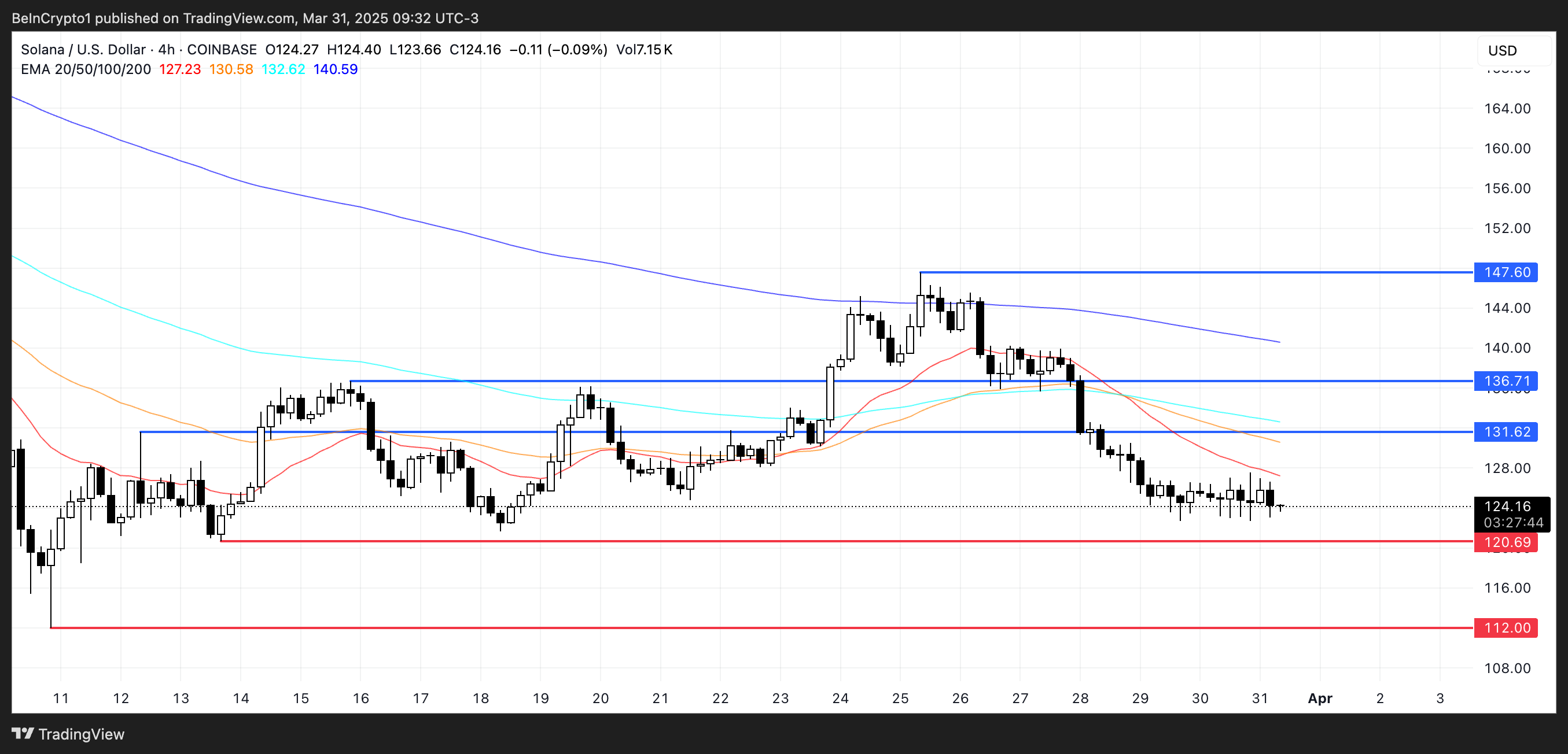
Despite the recent downturn, Solana remains one of the most relevant Made in USA coins and continues to show impressive usage metrics. PumpFun, for example, generated nearly $9 million in revenue over the past 24 hours, second only to Tether.
After a short period when BNB led the DEX volume race, Solana seems to be regaining traction—its decentralized exchange volume has surged by 128% in just seven days, reaching $18 billion and surpassing both Ethereum and BNB.
If this recovery in momentum persists, SOL could target a move toward the $131 resistance level. A successful breakout there could open the door to further gains toward $136 and potentially $147.
RENDER
RENDER, one of the most prominent U.S.-based cryptocurrencies with a focus on artificial intelligence, has seen its price decline nearly 11% over the past seven days.
This drop reflects the broader correction that has impacted many AI-related tokens in recent months.
However, new developments in the AI infrastructure space may provide a catalyst for a potential rebound, especially as the limitations of centralized systems become clear.
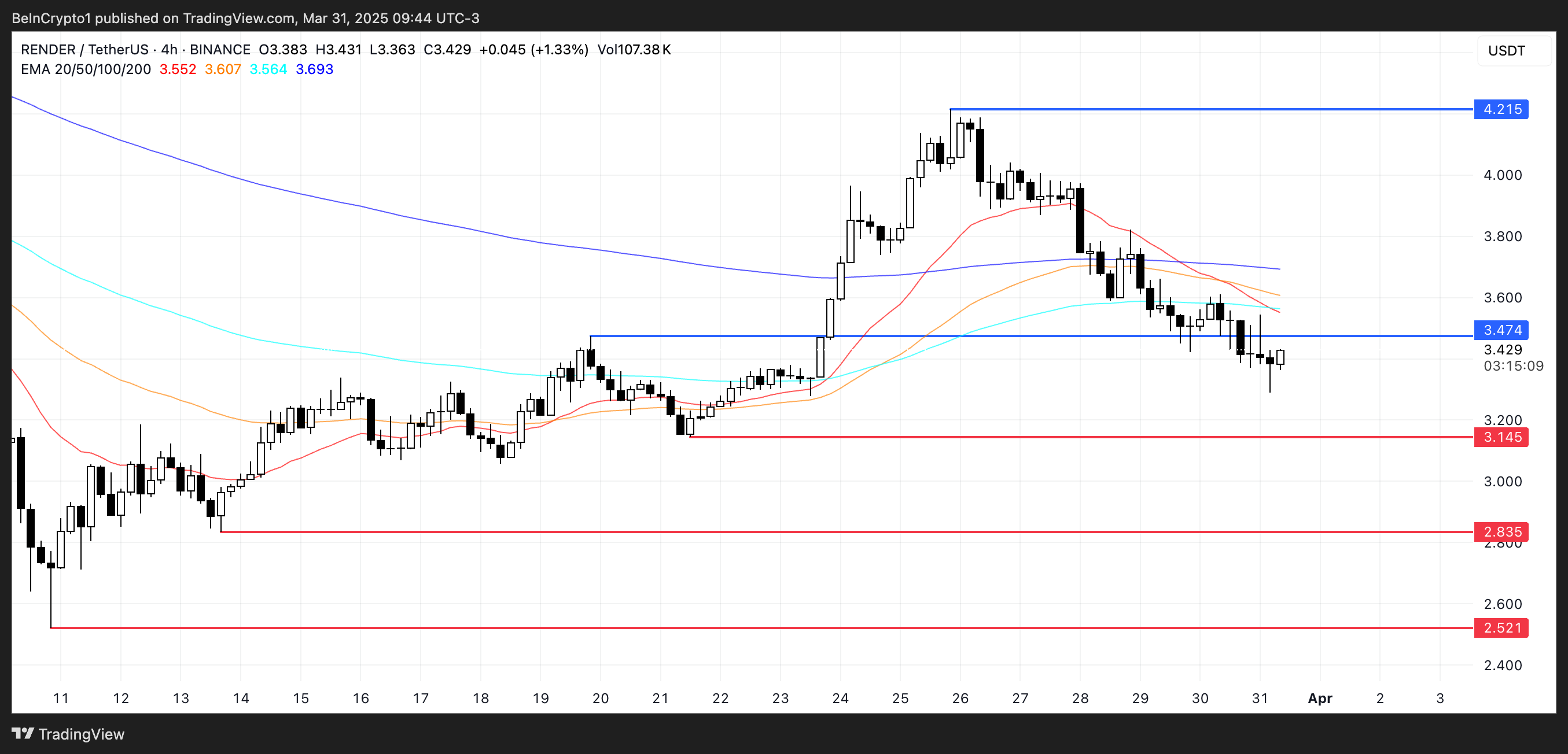
If bullish momentum returns to the AI sector, RENDER could look to challenge the resistance at $3.47, and a successful breakout might open the door for a rally toward $4.21.
However, if the current correction deepens, the token could fall to test the $3.14 support level. A breakdown there may trigger further losses, potentially dragging RENDER down to $2.83 or even $2.52—its lowest level in recent weeks.
Jupiter (JUP)
Despite Solana’s recent struggles, Jupiter—its leading DEX aggregator—is demonstrating impressive strength in terms of activity.
In the last 24 hours, Jupiter ranked as the fourth-highest protocol in crypto by fee generation, collecting nearly $2.5 million.
Only Tether, PumpFun, and Circle managed to outperform it, highlighting the platform’s growing relevance within the Solana ecosystem even during periods of broader market weakness.
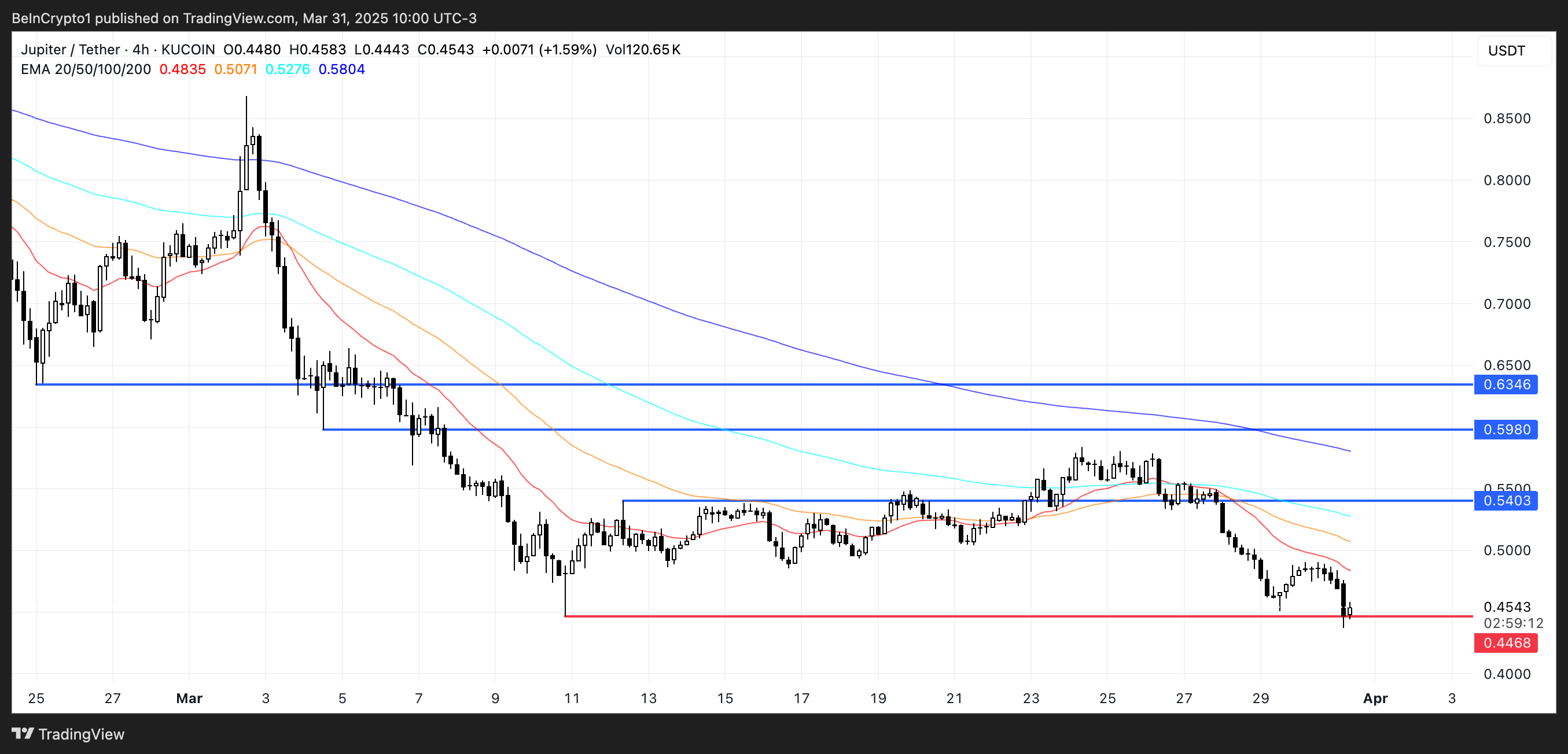
However, JUP, Jupiter’s native token, hasn’t mirrored this positive momentum. Its price has dropped over 21% in the past week, being one of the worst performers among the biggest Made in USA coins. It has remained below the $0.65 mark for three consecutive weeks.
With JUP now hovering dangerously close to a key support at $0.44, a breakdown could see the token dip below $0.40 for the first time ever.
Still, if market sentiment shifts and momentum returns, JUP could begin climbing again—first testing resistance at $0.54, then potentially moving toward $0.598 and even $0.63 if bullish pressure intensifies.
Disclaimer
In line with the Trust Project guidelines, this price analysis article is for informational purposes only and should not be considered financial or investment advice. BeInCrypto is committed to accurate, unbiased reporting, but market conditions are subject to change without notice. Always conduct your own research and consult with a professional before making any financial decisions. Please note that our Terms and Conditions, Privacy Policy, and Disclaimers have been updated.
Market
Cardano (ADA) Whales Hit 2-Year Low as Key Support Retested

Cardano (ADA) is facing mounting pressure as its price corrects by 10% over the past seven days, continuing a broader downtrend that has kept it trading below the $1 mark for nearly a month. With technical indicators flashing warning signs and large holders exiting their positions, concerns around ADA’s short-term stability are growing.
The recent rejection at higher resistance levels and a strong directional trend signal suggest that bearish momentum is far from over. As the $0.64 support level is tested once again, ADA’s next move could determine whether a rebound is possible—or if further downside is ahead.
Cardano ADX Shows The Downtrend Is Very Strong
Cardano’s Average Directional Index (ADX) is currently at 40.19, rising sharply from 15.83 just four days ago. This steep increase suggests a rapid strengthening in the trend’s momentum.
Given that ADA is currently in a downtrend, the rising ADX indicates that bearish momentum is intensifying and the current downward move is gaining traction.

The ADX is a trend strength indicator that measures how strong a trend is, regardless of its direction. It ranges from 0 to 100, with readings below 20 typically indicating a weak or non-existent trend, while values above 25 suggest a strong trend is in place.
Cardano’s ADX climbing above 40 confirms that the current downtrend is active and becoming stronger. If this trend continues, it may point to further downside pressure unless a shift in momentum begins to build from the bulls.
ADA Whales Dropped To Their Lowest Level Since February 2023
The number of Cardano whales—wallets holding between 1 million and 10 million ADA—has dropped to 2,406, down from 2,421 just four days ago.
This decline brings the whale count to its lowest level since February 2023, marking a potentially meaningful shift in large-holder behavior. These movements are worth paying attention to, as changes in whale holdings often precede broader market trends.
Tracking whales is important because these large holders can significantly influence price action through their buying or selling decisions. A decline in whale numbers can signal reduced confidence or capital rotation into other assets.
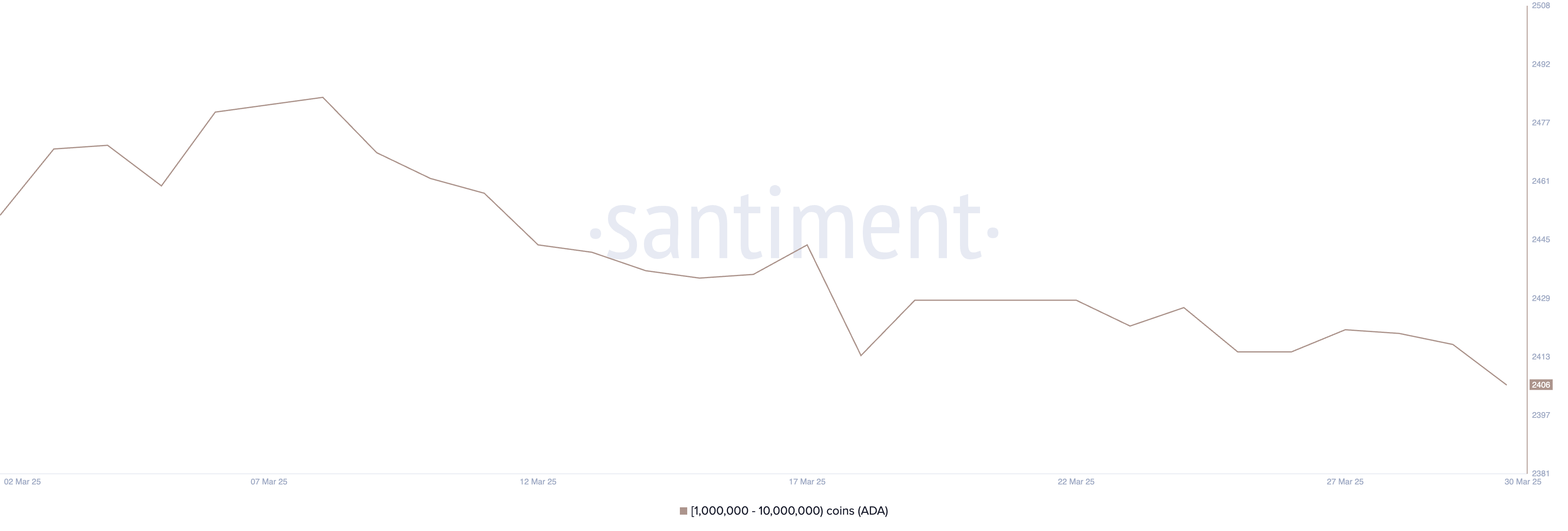
In Cardano’s case, the drop suggests that some major players may be exiting or reducing exposure, which could add downward pressure to ADA’s price.
If this trend continues, it could weaken investor sentiment and make it harder for ADA to recover in the short term.
Can Cardano Sustain The $0.64 Support Again?
Cardano price recently tested the support level at $0.64 and managed to hold, showing that buyers are still defending that zone. This support has become a key line in the sand for ADA’s short-term outlook.
If the current downtrend is reversed and bullish momentum picks up, the next upside target would be the resistance at $0.69. A breakout above that level could open the door for a push toward $0.77.
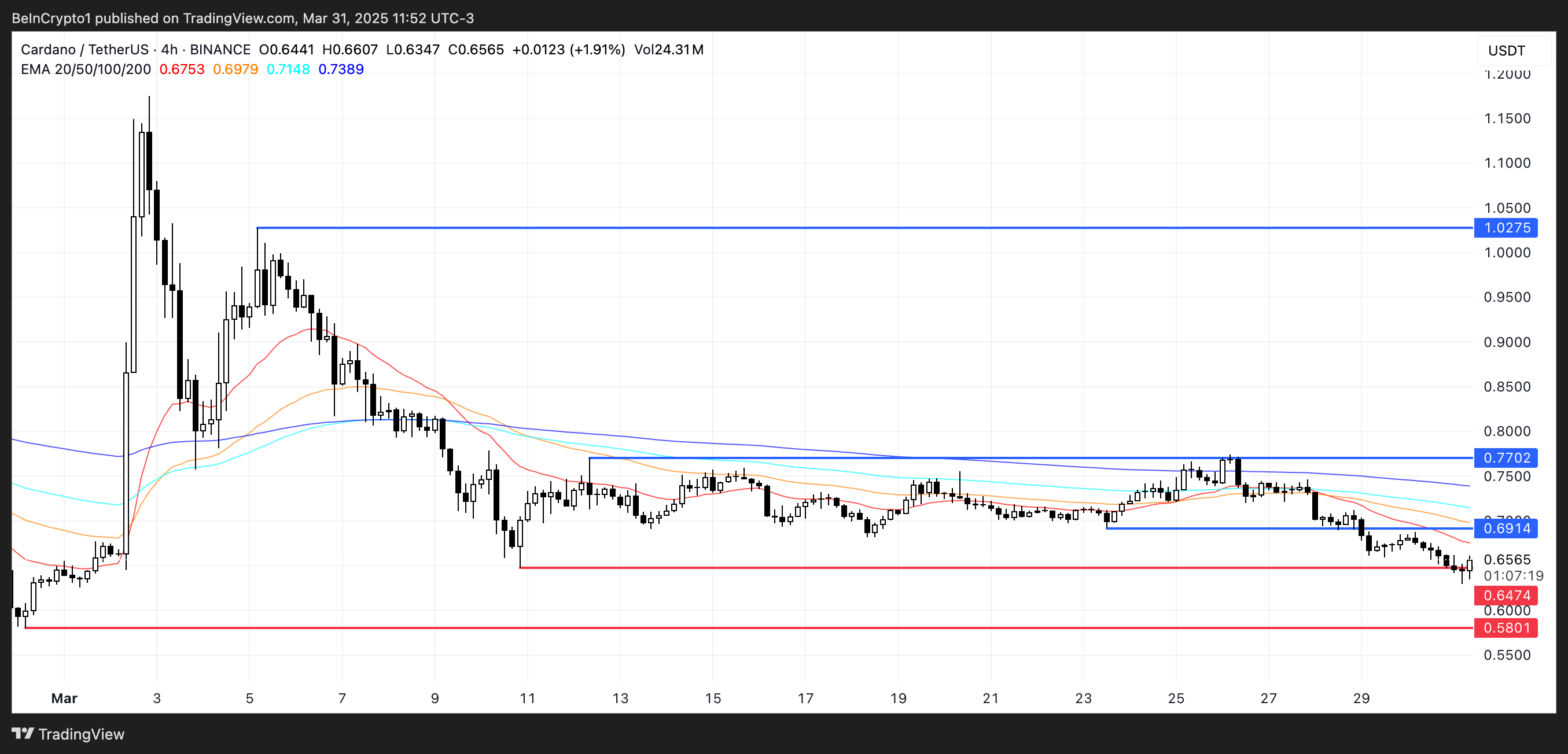
Should the rally continue with strength, ADA could aim for $1.02—marking a return above the $1 level for the first time since early March.
However, the $0.64 support remains a critical level to watch. If Cardano tests it again and fails to hold, it could indicate weakening buyer conviction.
A breakdown below $0.64 would likely send ADA toward the next support at $0.58. This would confirm a continuation of the downtrend and possibly trigger further selling pressure.
Disclaimer
In line with the Trust Project guidelines, this price analysis article is for informational purposes only and should not be considered financial or investment advice. BeInCrypto is committed to accurate, unbiased reporting, but market conditions are subject to change without notice. Always conduct your own research and consult with a professional before making any financial decisions. Please note that our Terms and Conditions, Privacy Policy, and Disclaimers have been updated.
Market
This is Why PumpSwap Brings Pump.fun To the Next Level

Since launching PumpSwap, token launchpad Pump.fun has resumed its position as a top-level protocol by fees and revenue. It saw over $2.62 billion in volume in less than two weeks, signifying high market interest.
Nonetheless, the meme coin sector as a whole has been more volatile than usual lately. PumpSwap is an attractive new option, but it still needs to stand the test of time.
Pump.fun Surges with PumpSwap
Pump.fun, a prominent meme coin creation platform, recently suffered some difficulties in the market. Facing lawsuits and criticism from the industry, the platform’s revenue had been declining in 2025. However, since launching PumpSwap, Pump.fun’s income has rebounded, making it one of the largest protocols by fees and revenue.

PumpSwap is a decentralized exchange on Solana’s blockchain, and it has grown very quickly since its launch less than two weeks ago. It has already managed over $2.62 billion in trade volume, although its daily volume fell over the weekend. Pump.fun’s cofounder spoke highly about PumpSwap, calling it a “crucial step that will help grow the ecosystem.”
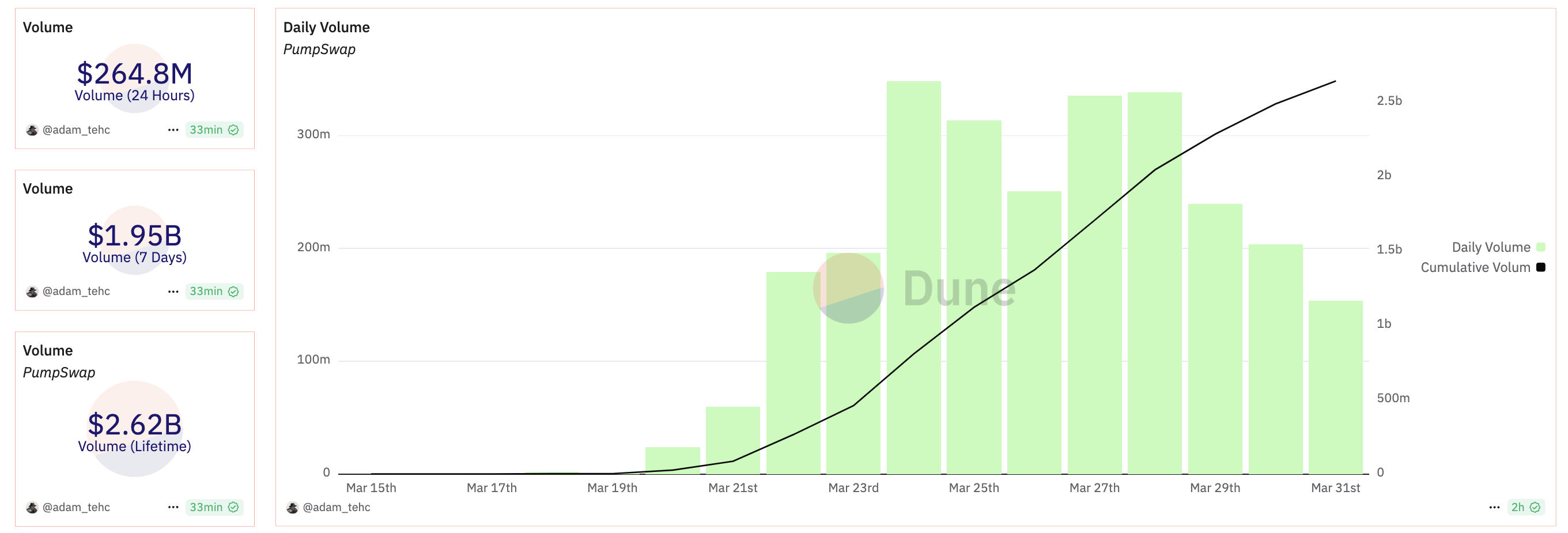
Pump.fun’s overall revenues were declining before it launched PumpSwap, and they have since jumped back up. However, it’s important to not overstate the new exchange’s success. The exchange’s total fees collected have skyrocketed compared to Pump.fun, but the actual revenue growth has been comparatively small.
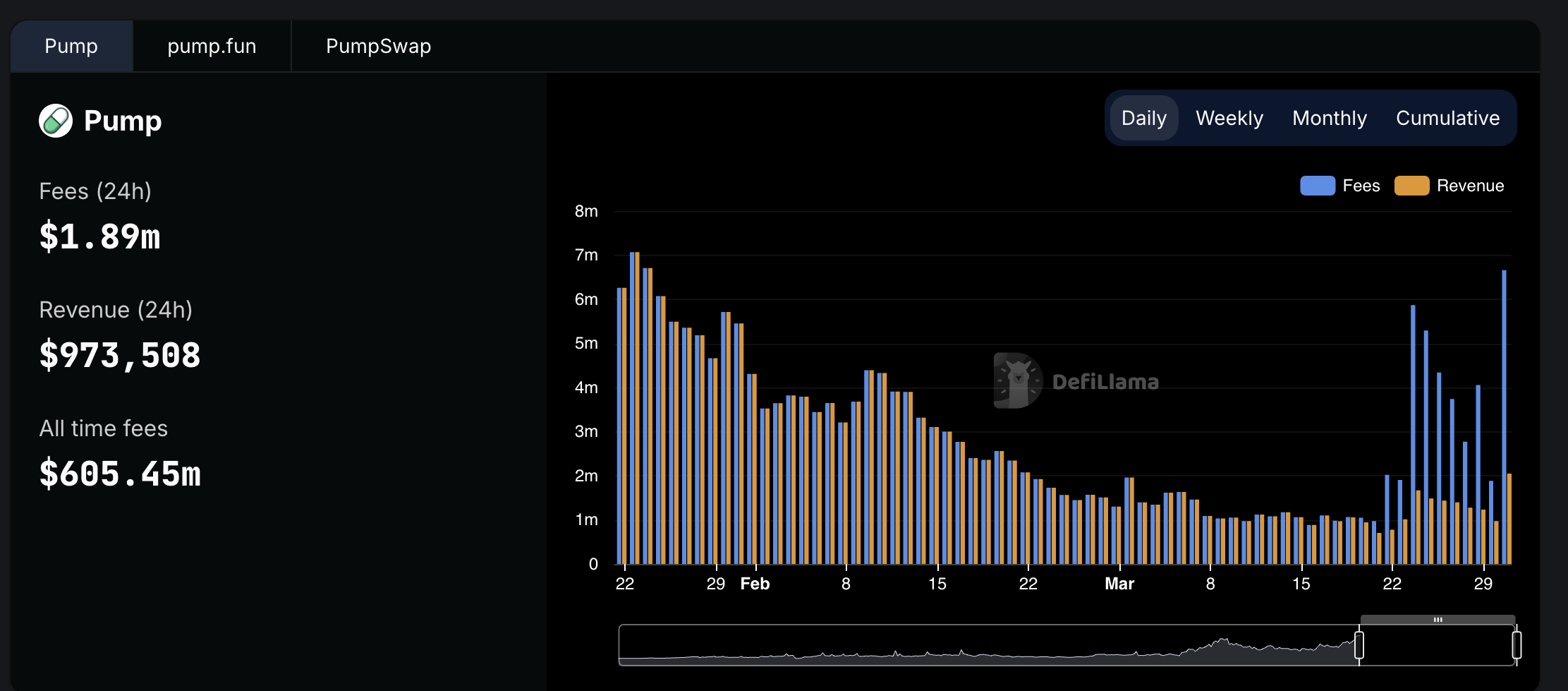
Still, these low fees also have significant advantages. Demand seems to be drying up in the meme coin sector, but Pump.fun faces stiff competition in the form of firms like Raydium, using low fees as a competitive edge. It has also promised things like revenue sharing with token creators to promote ecosystem growth.
Ultimately, the meme coin market as a whole is full of uncertainty. PumpSwap has been able to keep Pump.fun competitive as a top-level platform in this space, giving it a welcome reprieve. The real challenge will come in determining long-term viability.
Disclaimer
In adherence to the Trust Project guidelines, BeInCrypto is committed to unbiased, transparent reporting. This news article aims to provide accurate, timely information. However, readers are advised to verify facts independently and consult with a professional before making any decisions based on this content. Please note that our Terms and Conditions, Privacy Policy, and Disclaimers have been updated.
-

 Market10 hours ago
Market10 hours agoTrump Family Gets Most WLFI Revenue, Causing Corruption Fears
-

 Market23 hours ago
Market23 hours agoEthereum Price Weakens—Can Bulls Prevent a Major Breakdown?
-

 Market20 hours ago
Market20 hours agoBitcoin Price Nears $80,000; Fuels Death Cross Potential
-

 Market13 hours ago
Market13 hours agoBitcoin Mining Faces Tariff Challenges as Hashrate Hits New ATH
-

 Market18 hours ago
Market18 hours agoDon’t Fall for These Common Crypto Scams
-

 Bitcoin11 hours ago
Bitcoin11 hours agoStrategy Adds 22,048 BTC for Nearly $2 Billion
-

 Market16 hours ago
Market16 hours agoStrategic Move for Trump Family in Crypto
-

 Market11 hours ago
Market11 hours agoBNB Breaks Below $605 As Bullish Momentum Fades – What’s Next?




